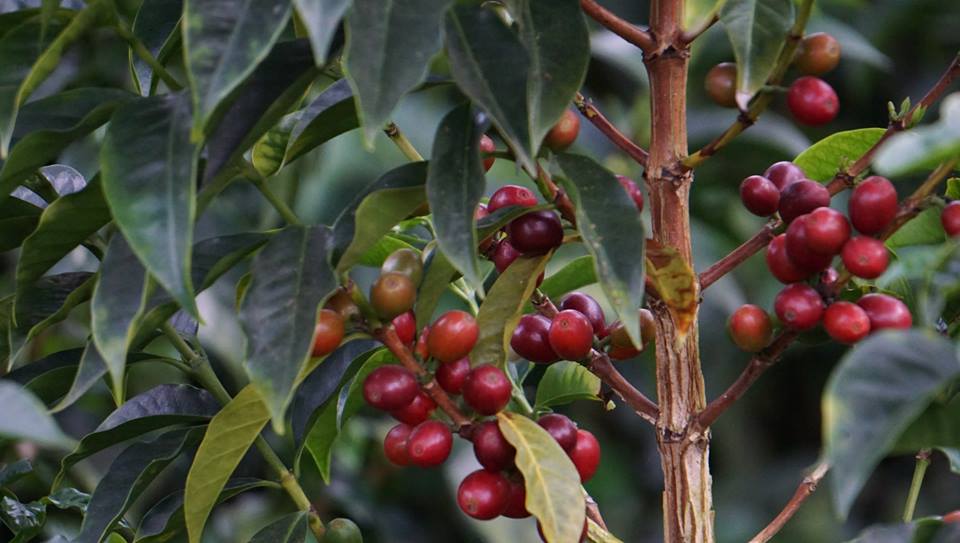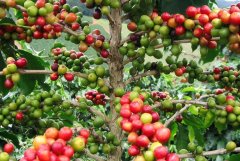Introduction to the three kinds of common coffee beans

At the moment, the development of coffee plant species in different regions of the world mainly include the following: ARABICA/ROBUSTA/LIBERICA/DEWEVREI/STENOPHILLA/CONGENSIS/ABEOKUTAS/KLAINII/ZAANGUEBARIAE/RACEMOSA. The coffee that is most commonly used to build coffee is mainly divided into three categories-small seed coffee beans (Arabica), medium seed coffee beans (Robusta), and Liberian coffee beans (Liberica).
Medium-grain coffee beans (Robusta)-medium-grain coffee beans (Robusta) come from a high-yield and disease-resistant variety that can better withstand a wide range of temperature differences than small-grain coffee beans. It is best to grow on the highlands at lower elevations. Medium-grain coffee beans, just like the English name "Robusta", have a strong taste and texture, bitter taste, and low acidity, bringing strength and concentration to the coffee. The coffee contains 2% caffeine and produces more beans than Arabica coffee, which can produce 2-3 pounds of coffee a year. This kind of coffee is often used as a low-grade coffee on the market. Although you can't find it in shops that sell high-quality coffee, Robusta coffee is widely used to build instant and assimilated coffee, as well as frozen and canned coffee.
Small seed coffee beans (Arabica)-small seed (Arabica) coffee beans are most suitable for development in temperate and subtropical regions at elevations of 3000-6500 feet (600-2000 m), which can delay their growth for a long time and make their coffee taste more intense. Coffee beans are oval and flat. Arabica coffee contains more elegant flavor, with fine taste, strong flavor, high acidity and slippery texture, bringing strong fragrance and smoothness to the coffee. Its caffeine content is around 1%. Because of its beautiful development, each coffee tree produces only 1-1.5 pounds of coffee a year. Many professional builders and happy lovers who are keen on coffee are happy to choose this kind of coffee. Arabica coffee accounts for 75 per cent of global production. Because the small-grain coffee tree is vulnerable to diseases and insect pests, frost and drought, it needs to be cultivated in a very beautiful situation, which is an appropriate prerequisite for the weather.
Liberica coffee beans-Liberica coffee is recognized as the third largest coffee variety in the coffee business. It is also grown at low elevations. This kind of coffee is produced in Africa and exported only to Europe. It is also a cheap coffee, especially similar to Robusta coffee.
Important Notice :
前街咖啡 FrontStreet Coffee has moved to new addredd:
FrontStreet Coffee Address: 315,Donghua East Road,GuangZhou
Tel:020 38364473
- Prev

One of the original varieties of Libyan coffee beans
The Liberian species (scientific name Coffea liberica) West Africa is the origin of Liberian coffee. It has a strong adaptability to high or low temperature, humidity or dry environment, but it is not resistant to leaf rust and its flavor is worse than that of Arabica, so it is only traded or planted in some West African countries (Libya, C ô te d'Ivoire, etc.).
- Next

How to drink coffee correctly
Coffee after meals is usually served in a pocket-sized cup. The ears of this cup are too small for fingers to pass through. But even if you use a larger cup, you don't have to put your finger through the ear to hold it. The coffee cups and saucers are also specially made. Put them in front of you or on your right side, with the ears pointing to the left. The correct way to hold a coffee cup should be with your thumb and index finger.
Related
- Beginners will see the "Coffee pull flower" guide!
- What is the difference between ice blog purified milk and ordinary milk coffee?
- Why is the Philippines the largest producer of crops in Liberia?
- For coffee extraction, should the fine powder be retained?
- How does extracted espresso fill pressed powder? How much strength does it take to press the powder?
- How to make jasmine cold extract coffee? Is the jasmine + latte good?
- Will this little toy really make the coffee taste better? How does Lily Drip affect coffee extraction?
- Will the action of slapping the filter cup also affect coffee extraction?
- What's the difference between powder-to-water ratio and powder-to-liquid ratio?
- What is the Ethiopian local species? What does it have to do with Heirloom native species?

